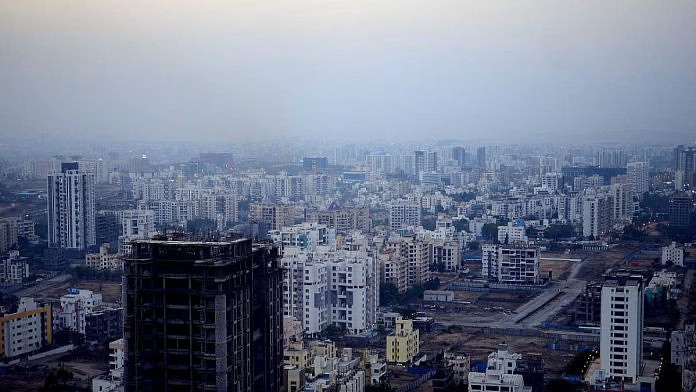PMRDA ₹67 Crore Plan to Transform Pune Tourism Infrastructure
The Pune Metropolitan Region Development Authority (PMRDA) has set forth an ambitious ₹67 crore initiative to enhance accessibility and infrastructure at major tourist destinations across the region. The proposal, which aims to revitalise key heritage sites, lakes, and natural attractions, includes road development, improved sanitation, parking facilities, and security enhancements. With Pune’s tourism industry witnessing steady growth, better infrastructure is crucial to boost local economies and attract visitors while ensuring sustainable development.
The proposal focuses on nine key tourist locations in the Maval, Haveli, and Mulshi talukas, with a significant share of funding allocated for fort connectivity and safety enhancements. Among the destinations identified for development are Khadakwasla dam, Pawana dam, and historical forts such as Tikona, Tung, Lohagad, and Rajmachi. According to PMRDA Commissioner Dr Yogesh Mhase, the project aims to create a safe and well-planned tourism ecosystem, ensuring seamless connectivity and an improved visitor experience. The proposal was approved by Maharashtra Chief Minister Devendra Fadnavis in a high-level meeting in Mumbai, reinforcing the government’s commitment to strengthening Pune’s tourism potential.
Connectivity and Infrastructure Upgrades: A Game Changer for Tourism
A significant portion of the budget—₹38 crore—has been allocated to develop roads leading to heritage forts, addressing long-standing issues of poor connectivity and safety concerns for travellers. Some of the major road projects include:
- A 14-km road between Mugao and Tamhini Ghat in Maval at ₹10 crore.
- A 6.5-km road to improve access to Tikona Fort and Pawana Dam at ₹8 crore.
- A 4-km road to Tung Fort at ₹6 crore.
- A 5-km road to Lohagad Fort at ₹7 crore.
- A 14-km road to Rajmachi Fort at ₹17 crore.
Apart from fort connectivity, ₹11 crore has been set aside to upgrade access to other tourist locations, pending approval from the Metropolitan Commissioner. The Khadakwasla dam area, a popular recreation spot, is also set to undergo a transformation with ₹1 crore allocated for parking, sanitation, and safety measures. Additionally, Mulshi Lake and Palshe Waterfall will receive ₹2 crore each for protective installations, road repairs, and aesthetic enhancements.
This strategic investment is expected to significantly enhance visitor experience, making these locations more accessible and safer for tourists. By improving infrastructure, authorities also aim to generate employment opportunities for locals and foster growth in allied sectors such as hospitality and retail.
Civic Challenges: Tackling Unauthorised Constructions and Safety Hazards
While infrastructure development is a priority, the PMRDA is also intensifying efforts to curb illegal construction, which has plagued many of these tourist locations. To streamline urban planning and prevent safety hazards, a village-level monitoring committee has been established, comprising Sarpanches, Talathis, Gram Sevaks, and local law enforcement officials.
This committee will oversee the enforcement of building regulations, ensuring that unauthorised structures—often constructed in ecologically sensitive zones—are identified and dealt with swiftly. Currently, the PMRDA has only 33 officials managing 700 villages across nine talukas, making enforcement a challenge. A recent survey found over 9,000 illegal constructions, many of which have already received demolition notices.
With the new committee in place, the PMRDA expects faster action against unauthorised developments, helping preserve Pune’s natural and heritage sites while ensuring that tourism growth does not come at the cost of safety and environmental degradation.
Sustainability Perspective: Balancing Tourism Growth with Environmental Conservation
Pune’s tourism revival must align with sustainability goals to prevent long-term damage to its natural and historical sites. The development of road infrastructure, while crucial, must be complemented with eco-friendly measures to minimise the environmental footprint of increased tourism activity.
Experts recommend that PMRDA integrate green infrastructure initiatives, including:
- Rainwater harvesting systems to maintain water levels at lakes and dams.
- Eco-sensitive road construction techniques that prevent excessive deforestation.
- Solar-powered lighting and waste management systems to reduce carbon footprints.
- Strict regulation on plastic waste and pollution control near heritage sites.
Other Indian cities like Udaipur and Mysuru have successfully integrated sustainability into their tourism growth strategies, ensuring balanced development without compromising ecological integrity. Pune, with its rich history and natural attractions, must adopt a similar long-term vision to ensure that its tourist destinations remain viable and environmentally responsible.
With the ₹67 crore tourism development plan, PMRDA is taking a decisive step towards transforming Pune’s tourism landscape. However, the real success of this initiative will depend on its execution, the inclusion of sustainable practices, and a collaborative effort from authorities, businesses, and local communities to preserve Pune’s heritage while boosting its tourism economy.




